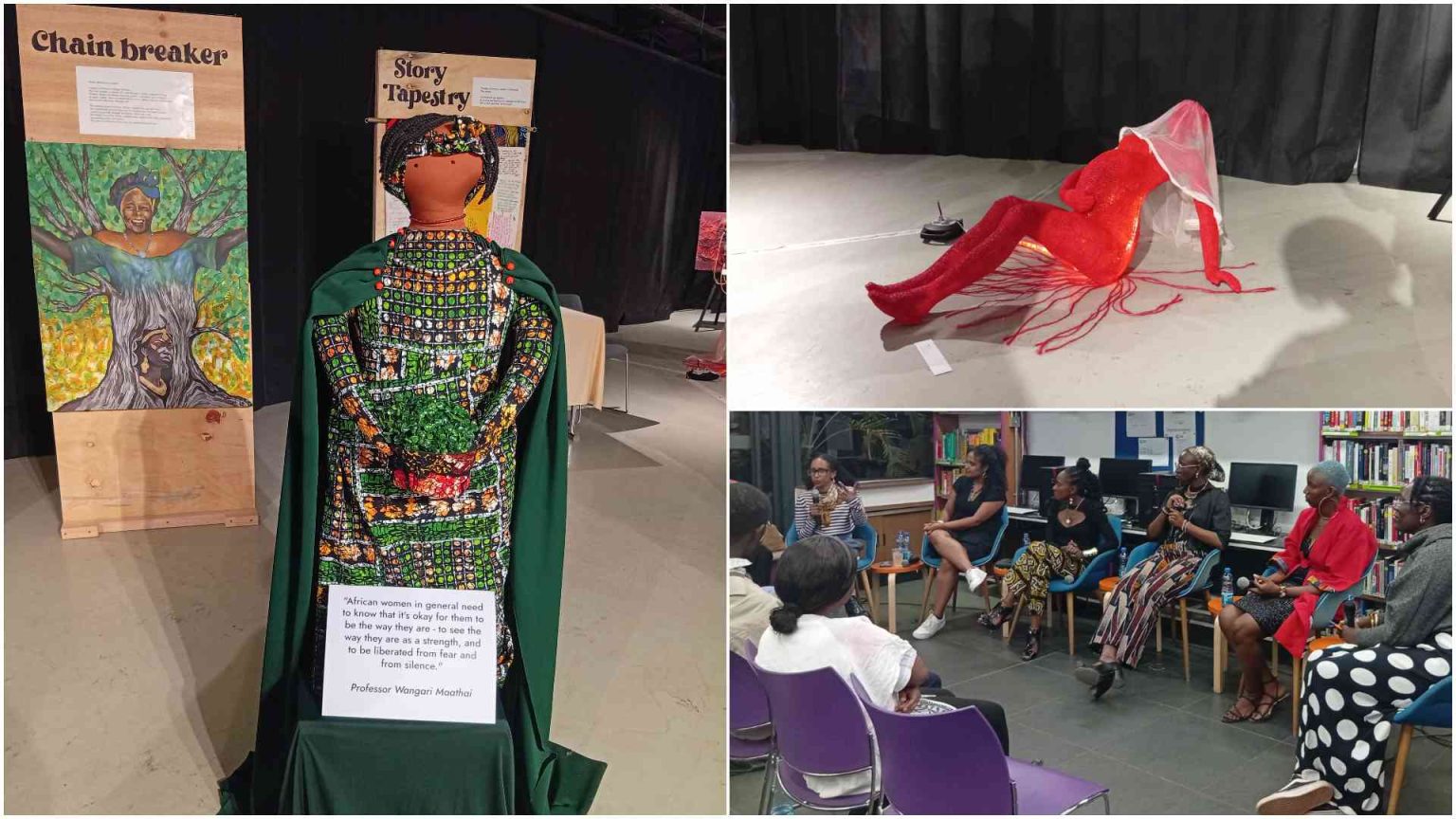It’s not every day that an art exhibition opens across two venues, but Rewind, Remix, Reclaim did just that, setting off a vibrant, multi-site experience at both the Alliance Française (AF) Nairobi and Goethe-Institut Nairobi.
Curated by Kenyan writer and filmmaker Wanjeri Gakuru, on the evening of July 17, the all-women group exhibition commemorates the 40th anniversary of the landmark 1985 UN World Conference on Women held in Nairobi, a defining moment in global conversations on gender equality, development, and peace.
Bringing together five female artists, Sebawali Sio, Wakianda, Namasti Lukoye, Bella McInk, and Tizzita Tefera, the exhibition celebrates female narratives, from the mythical and historical to the deeply personal and communal.
At the Goethe-Institut gallery, works by Sebawali, Wakianda, Namasti, and Bella opened the evening. Visitors then made their way to AF Nairobi, a short walk away, where Tizzita’s installation was showcased.
The evening concluded with a lively artist talk at the Goethe-Institut library, moderated by Awuor Anyango.
Sebawali’s contribution taps into the metaphor of water to explore the fluidity and strength of women and feminist movements since 1985. Her oil and canvas paintings, She Met Herself in the Current and She Became the Water, depict the mythical Mami Wata emerging from the ocean.
Her sculptures include The Deep is a Woman, made from resin and painted purple, and The Ocean Remembers Her Daughters, composed of cowrie shells and gypsum. Some of the shells were gathered from her grandparents’ coastal home.
“Historically, cowrie shells held economic and cultural value,” Sebawali notes. “They were symbols of luck, beauty, abundance, and spiritual practice, meanings that today are slowly being forgotten.”
Wakianda’s installations delve into womanhood and motherhood. Her piece Labour Pains depicts a pregnant woman in a red dress and white veil, while Shrine of the Unspoken presents a large sculptural vulva, each turn representing different reproductive journeys: childbirth, infertility, menstruation.
“Each form honours a story,” she explains. “These are the experiences women rarely talk about but live with deeply.”
At AF Nairobi, Ethiopian artist Tizzita Tefera filled a gallery space with Shamma cloth installations featuring imprints of Field Marshall Muthoni Kirima, Angela Davis, and Ethiopian Empress Taytu Betul.
Hanging burrows with portraits of herself and women in her family underscore womanhood’s cyclical nature. A wall collage of 1985 newspaper clippings reflects the historical backdrop of that pivotal year.
Sisters Bella and Namasti Lukoye turned to folklore and symbolism. Bella’s haunting piece, This Land Knows Us by Name, depicts a lioness with a human face emerging from shadows, meant to symbolise the spiritual essence of the land.
Namasti’s handmade dolls link Kenyan icon Wangari Maathai with the goddess Mawu, the deity of justice.
“When we see trees, we think of Wangari,” Namasti says. “And beneath them, goddesses like Mawu hold us in our strength and resistance.”
The curatorial statement powerfully encapsulates the show’s mission: “Rewinds to the voices and moments of the 1985 conference; remixes them with today’s feminist movements and activism; and reclaims the unfinished goals of 1985.”
